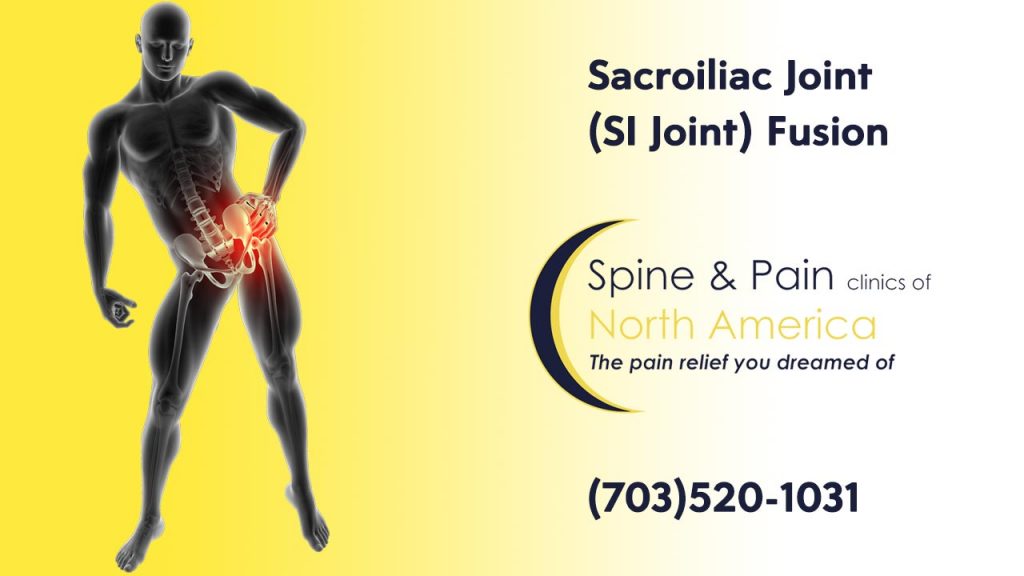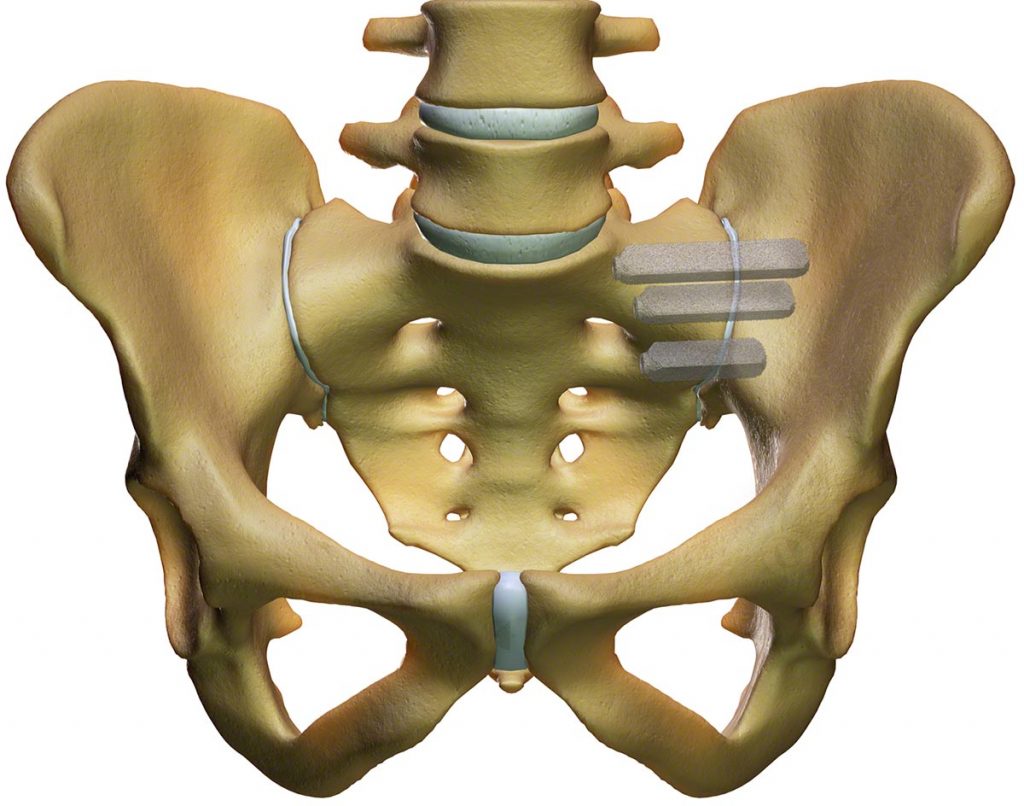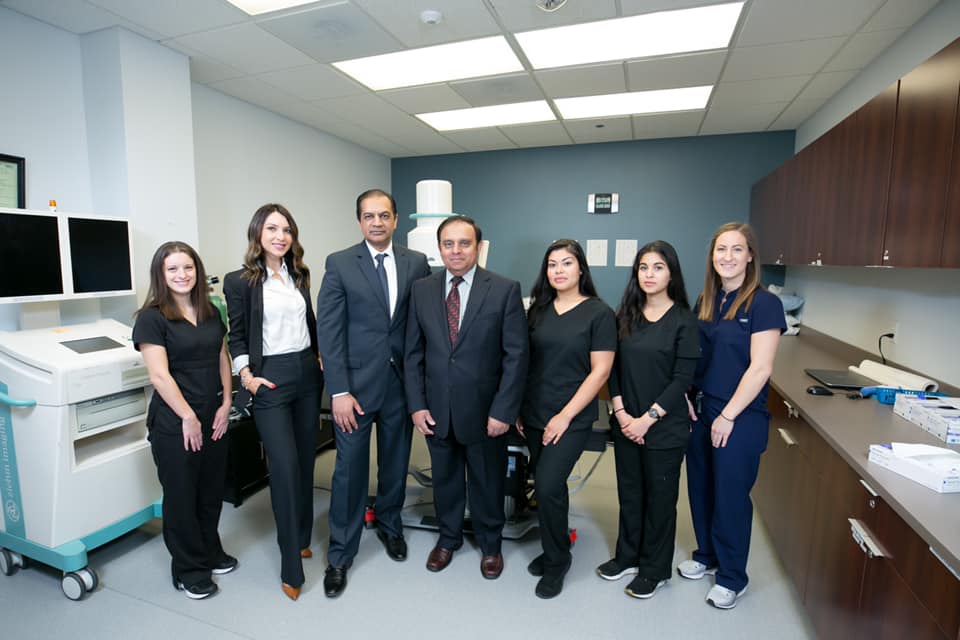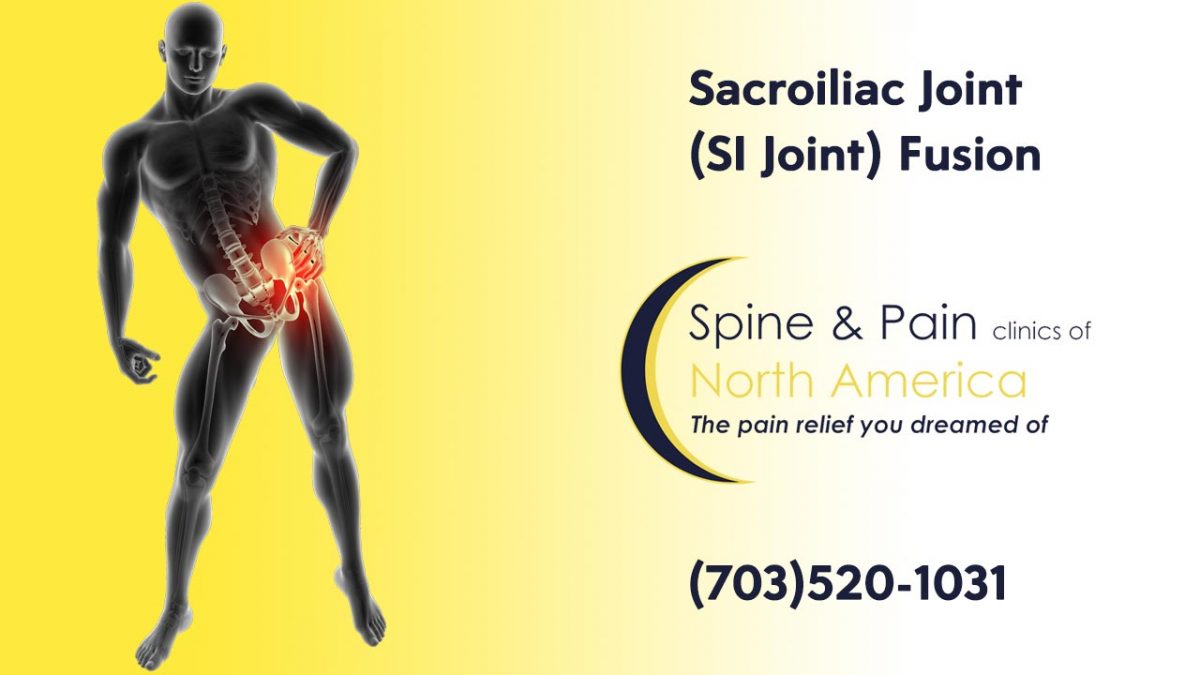![]()
Call (703) 520-1031 or use the form below to send us your contacts.

What is Sacroiliac Joint Pain?
The sacroiliac joint (SI) is in a person’s pelvis. The function of this joint is to connect the iliac bones to the lowest part of the spine or the sacrum. The SI joint remains to work as the shock absorber to protect the spine. So when it becomes damaged, the lower back experiences more pain.
What Causes Sacroiliac Joint Pain?
The significant causes of pain in the Sacroiliac include:
- Trauma.
- Mechanical issues such as leg length discrepancy and lumbar fusion.
- Hormonal issues.
- Inflammatory joint diseases.
- Wear and tear related to age.
What Symptoms Occur with Sacroiliac Joint Disorders?
Symptoms occurring with SI joint problems include:
- Pain in the lower back.
- Buttock or pelvis pain.
- Lower extremity tingling, discomfort, weakness, or numbness.
- Pain going down one leg.
- Pain in the groin or hip.
- Feeling that your hips will give out on you.
- Lack of sleep due to pain.
- Problems sitting for a long time.
- Issues when trying to stand from a seated position.
Diagnosing SI Joint Problems
A physical examination remains necessary to determine SI joint disorders. Some of the technology used includes:
- X-rays
- CT-scans
- MRIs
The most reliable way to choose if a SI fusion is practical includes shooting local anesthetics into the SI joint. A SI fusion remains helpful if such an injection relieves pain by at least 50 percent.
Who can Benefit from SI Fusion Surgery?
About 25-50 percent of low back pain occurs due to SI joint dysfunction. Doctors treat pain in the lower back, leg, and groin with such treatments as:
- Physical therapy
- Injections
- Pain and other medications
Treatments might occur for up to six months. If these treatments don’t relieve lower back pain, your doctor might suggest SI joint fusion. In SI Joint fusion, titanium stabilizing implants protect the SI joint from pain.

Why SI Joint Fusion?
In some individuals, the SI joint becomes unstable, and pain occurs.
SI joint fusion is minimally invasive surgery. Pain specialists from Spine pain clinic fuse this joint to prevent excess movement in the area and relieve discomfort. Doctors use two small incisions to create an opening to place the tiny titanium implants. During these incisions, no muscles or ligaments are cut. About 80 percent of SI joint fusion patients report significant relief of pain. And the patient gets released from the hospital within a day or two.
The Sacroiliac Joint Fusion Procedure
Your surgeon gives thorough instructions about what to do before SI joint fusion surgery. Please discuss these instructions with your doctor. Please don’t eat or drink anything for several hours before surgery, and take any prescribed medicine your doctor instructs you to take. Following pre-surgery instructions allows for the best results and a safe procedure.
A general anesthetic is usually used. Small incisions allow the surgeon to place implants to stabilize the SI joint and relieve pain. The doctor makes two small (two cm. long) incisions, and triangle-shaped titanium pieces become implanted into the Sacroiliac joint. These implants allow the lower back to become more stable and bear weight easily. They also prevent further pain or deterioration of the SI area. A fluoroscope helps the specialist perform the procedure safely and accurately. SI joint fusion usually takes about one hour.
A patient gets released from the hospital after about two days. Your doctor prescribes medications to assist with pain in the first days of healing. Ice packs also work well to relieve surgical pain. Patients use crutches for about four to six weeks.
The patient should avoid heavy lifting, sitting or standing for a long time, or climbing stairs until the doctor approves these activities. Most individuals who have had a SI joint fusion procedure go back to work within six weeks after surgery.
Complete recovery happens in about six months when the patient usually returns to normal, strenuous activities. Please be sure to consult your physician before you resume these activities, however.
New Non Invasive Treatment for SI Joint Dysfunction
A different type of SI joint fixation involves the placement of a cortical bone graft in the joint where the bones grow together. Thanks to the development of advanced technologies, new non-invasive options are available, like the SiLOTM joint fusion procedure. This procedure involves the following basic maneuvers.
- Making a small incision to insert a joint finder
- Advancing the SiLOTM GhostTube, which enables visualizing the SI joint
- Using a decorticator that produces a bone surface that stimulates bone growth
- Placing biologics into the joint
- Placing a SiLOTM Graft Implant) made of human cortical bone into the joint
- Adding additional biologics
The implant’s three ridged vertical side channels hold the bone graft in place during fusion, and two vertical side channels can accommodate additional bone graft material.
The implant’s three ridged vertical side channels hold the bone graft in place during fusion, and two vertical side channels can accommodate additional bone graft material.
The FDA recently approved a newer version of the SiLOTM joint fusion system called the SiLO TFX™ MIS Sacroiliac Joint Fixation System. Patients with SI joint deterioration or disruption may find pain relief through this system. It transfixes (holds in place) the ilium and sacrum while the bones fuse.
Why Choose Sapna Pain Clinic to Perform Sacroiliac Joint Fusion?

Sapna Pain Clinic of North America remains the specialist in relieving spinal pain in North America. Our expert physicians stay at the top in their field because they are:
- Experts in treating both chronic and acute pain conditions.
- Specialists in interventional pain management for spinal disorders, cancer pain, and amputation pain.
Pain specialists specialize in advanced procedural interventions to treat all types of pain complaints related with SI doint dysfunction. SI joint fusions as well as SiLOTM joint fusion procedures are available at Sapna Pain Clinic of North America.
The pain clinic also uses such treatment methods as:
- The latest in procedures using both the fluoroscope and ultrasound.
- Non-opioid management of pain.
- Precise evaluation of patients to determine whether they should use opioid pain management methods.
- Expert surgical and non-surgical procedures.
- Post-surgical care for spinal, orthopedic, neurosurgical, abdominal, thoracic, and gynecological patients.
SAPNA spine experts Dr. Ashraf Sabahat and Majid Ghauri use their over 25 years of experience to serve their spinal patience to gain the best results. Please get in touch with Sapna Pain Clinic soon for more information.
